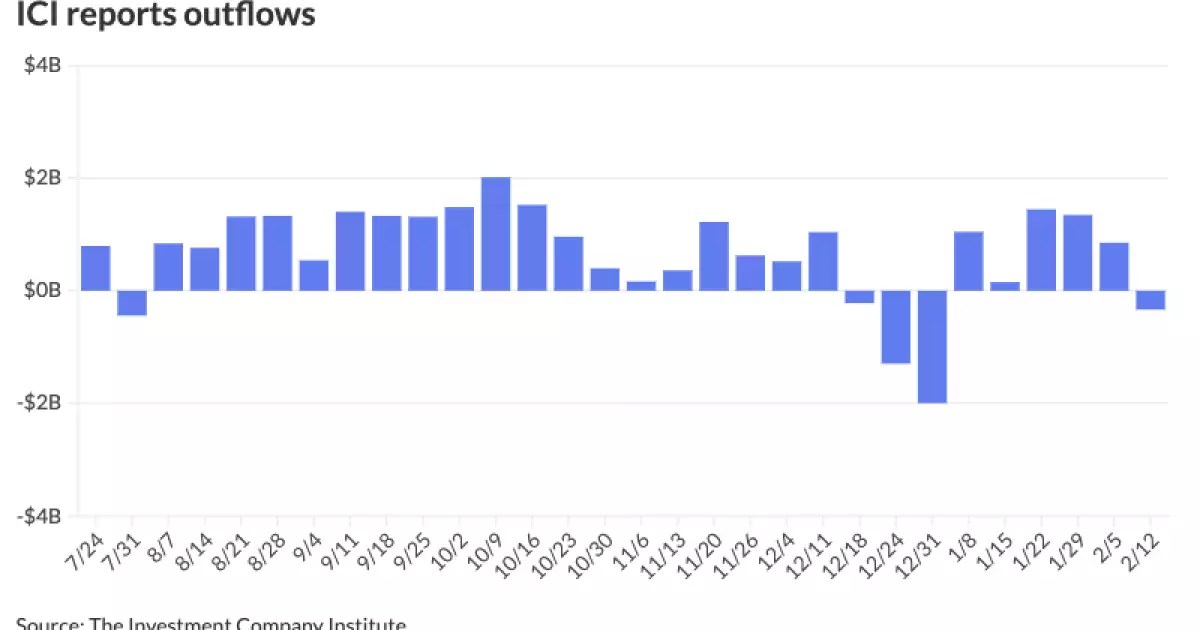In recent days, the municipal bond market has exhibited remarkable stability, a notable observation amidst the backdrop of fluctuating U.S. Treasuries and mixed performances in equity markets. For those engaged in the municipal bond space, the ratios when comparing two-year municipal bonds to U.S. Treasury securities stand at 63% for the two-year and five-year terms, with a slightly higher ratio of 66% for the ten-year maturity. The thirty-year bonds held a ratio of 84%, based on the latest data from market analytics following mid-afternoon trading sessions. These metrics are critical for investors as they gauge the relative attractiveness of municipal bonds compared to their Treasury counterparts.
According to the Investment Company Institute (ICI), the trend of capital flows has shown a significant shift, with a net outflow of $336 million observed for the week ending February 12. This follows a preceding week that saw inflows totaling $852 million. Interestingly, reports from LSEG Lipper presented a conflicting view, indicating an inflow of $238.5 million during the same timeline. The situation becomes even more complex when examining the performance of exchange-traded funds (ETFs), which recorded impressive inflows amounting to $1.385 billion after a more modest $109 million the prior week. Such discrepancies highlight the dynamism within the market and raise questions about the overall health and direction of the municipal bond sector.
The landscape of municipal bond issuance is on an upward trajectory, with new offerings projected to exceed $500 billion throughout 2024. Industry experts like Nick Venditti, the head of municipal fixed income at Allspring, emphasize that the current environment is markedly different from the past two years, where many issuers could afford to procrastinate their issuance activities. The urgency to capitalize on dwindling COVID-era funds and address long-neglected infrastructure projects has catalyzed an uptick in market participation.
The past week alone saw significant issuance activity, categorizing it as one of the largest calendars in recent memory. However, there is a caveat; while demand remains robust, it is crucial to keep a watchful eye on the balance between supply and demand dynamics. Increased pressure from rate-sensitive borrowers could further complicate the landscape if investor appetite falters.
Although the immediate pressures have prompted a flurry of municipal bond offerings, analysts are pondering whether such demand will persist as the year progresses. Venditti points out that while the momentum at the start of the year was promising, future trends could lead to potential realizations of overwhelming supply that may weigh down on the market. The concern around the interaction between technical trading dynamics and investor behavior makes forecasting particularly challenging.
Institutional investors demonstrated a keen interest last week, bolstered by external market forces. However, the marginal buyers who remain—often managed accounts—may reevaluate their strategies should nominal bond rates decline significantly. This adaptation is vital for ensuring that the market continues to thrive amidst shifting economic conditions.
Looking ahead, the primary market is gearing up for several notable bond offerings, crucial for gauging the overall market sentiment. Notably, Miami-Dade County, Florida, is set to issue $525.93 million in airport revenue bonds, along with the Texas Tech University System planning $298.375 million to fund essential improvements and refinancing. The Wisconsin Health and Educational Facilities Authority also has an upcoming issuance, signaling that demand for municipal financing remains robust even as certain risks loom.
These upcoming offerings will not only influence liquidity but also reflect investor sentiment as they navigate the complexities of the current economic environment. The results of these issuances may serve as a barometer for the broader municipal bond market’s stability, providing crucial insights into how investors are adjusting their strategies against the backdrop of interest rate fluctuations.
The municipal bond market stands at an intriguing crossroads, characterized by stabilization efforts against a backdrop of changing economic conditions. As issuance rises and market participants respond to complex signals regarding inflows and outflows, the dynamics will remain closely watched. Investors and analysts alike will need to remain agile, prepared to adapt to new developments, and vigilant in assessing both demand and supply as they shape the future of municipal finance. The coming months will be pivotal in determining the health and trajectory of municipal bonds, presenting both challenges and opportunities in equal measure.


Leave a Reply